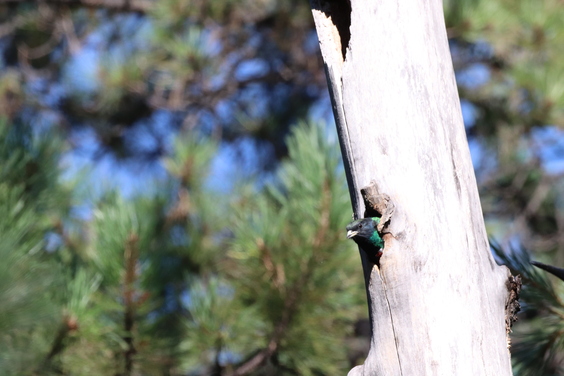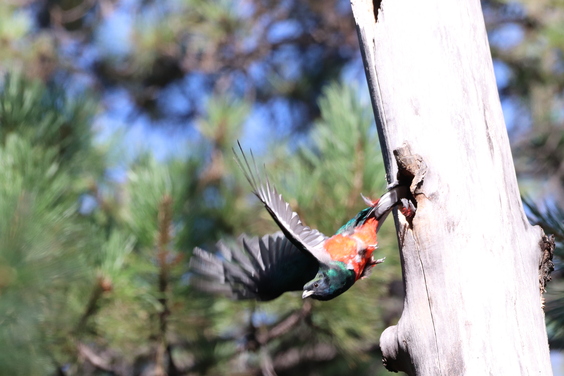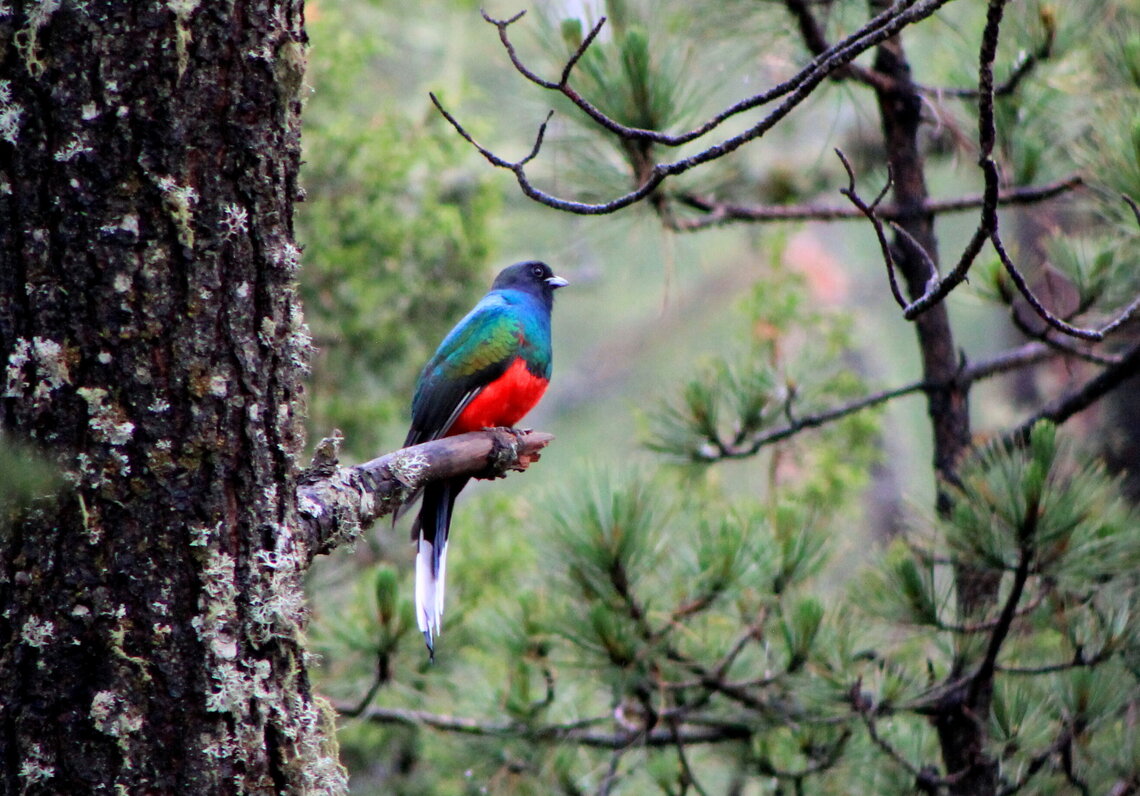Javier Cruz Nieto¹, Miguel Ángel Cruz Nieto¹, José Ignacio González Rojas², Edwin Juarez³, Sergio Jiménez Lezama¹, ¹Organización Vida Silvestre A.C., ²Universidad Autónoma de Nuevo León, ³Arizona Game and Fish Department
The Eared Quetzal (Euptilotis neoxenus) is considered endemic to the Sierra Madre Occidental (SMO), although its records have recently increased in the southern United States. Between 2009 and 2020, we located 39 nests in temperate forests of the SMO in the state of Chihuahua. The geographical location was of an altitude average of 2,350 ± 1,443 masl, on hillside exposures located to the north and 87% of the nests adjacent to permanent water creeks. The distance between nests was 2,459 m on average with a range between 766 to 4,640 m (n = 39).

The characteristics of the trees include six species used as nests: aspen (n = 26), Durango pine (n = 6), Douglas fir (n = 5), white pine (n = 1), oak (n = 1) and alder (n = 1). The nests were located at a height of 20 m on average with a range between 6 to 34 m. The diameter at breast height – used as an indicator of the age of the nest trees – was on average 55 cm with a range of 30 to 90 cm, which are considered primary or mature trees. The condition of the trees used for nesting was 69% dead trees and 31% live trees in decay. We believe that primary excavators, mainly Acorn Woodpecker and Northern Flicker, produced 72% of the cavities and the rest were natural cavities.
The reproductive season ranges from the second week of May to September. The reproduction period lasts 54 days on average, with ten days of cavity conditioning, 3 days of egg laying, 21 days of incubation carried out by both parents, and the chicks begin to fly after 23 days.
Females lay on average 3 eggs, of which 2.64 chicks on average hatch, and 2.24 chicks fledge per nest (n = 25). Factors for mortality include human disturbance, habitat destruction, and predation. The chicks are born alternately, without down. After five days, black down is first observed on their back, and fully covers the back at nine days old. At twelve days old, they begin to turn light brown. At 21 days old, chicks are visible in the cavity and can already jump to neighboring trees and leave the nest. Adult behavior when caring for the brood is secretive. They are very sensitive to human disturbance during incubation. From direct observations, we believe that they are faithful to their nesting cavities because we have observed some cavities being used for up to 7 years, and we have seen pairs in these reproductive territories for more than 20 years.

Some of the species with which it shares its habitat and may be potential competitors for cavities are Abert’s squirrel, chipmunks, European bee, Northern Saw-whet Owl, Flammulated Owl, Northern Flicker, Acorn Woodpecker, and Thick-billed Parrot. Potential predators include bobcat, coati, spotted skunk, raccoon, Northern Goshawk, Cooper’s Hawk, and Sharp-shinned Hawk.
The diet based on direct observations of food delivery to chicks in the nest and on adults consists of 7 types of plant fruits: Mexican black cherry, wild grape, strawberry tree, wild strawberry, pointleaf manzanita and nightshade. In addition to butterflies, lizards (Sceloporus spp), caterpillars, dragonflies and other insects.
In 2021, we will use satellite transmitter technology to determine habitat use and migratory movements.

